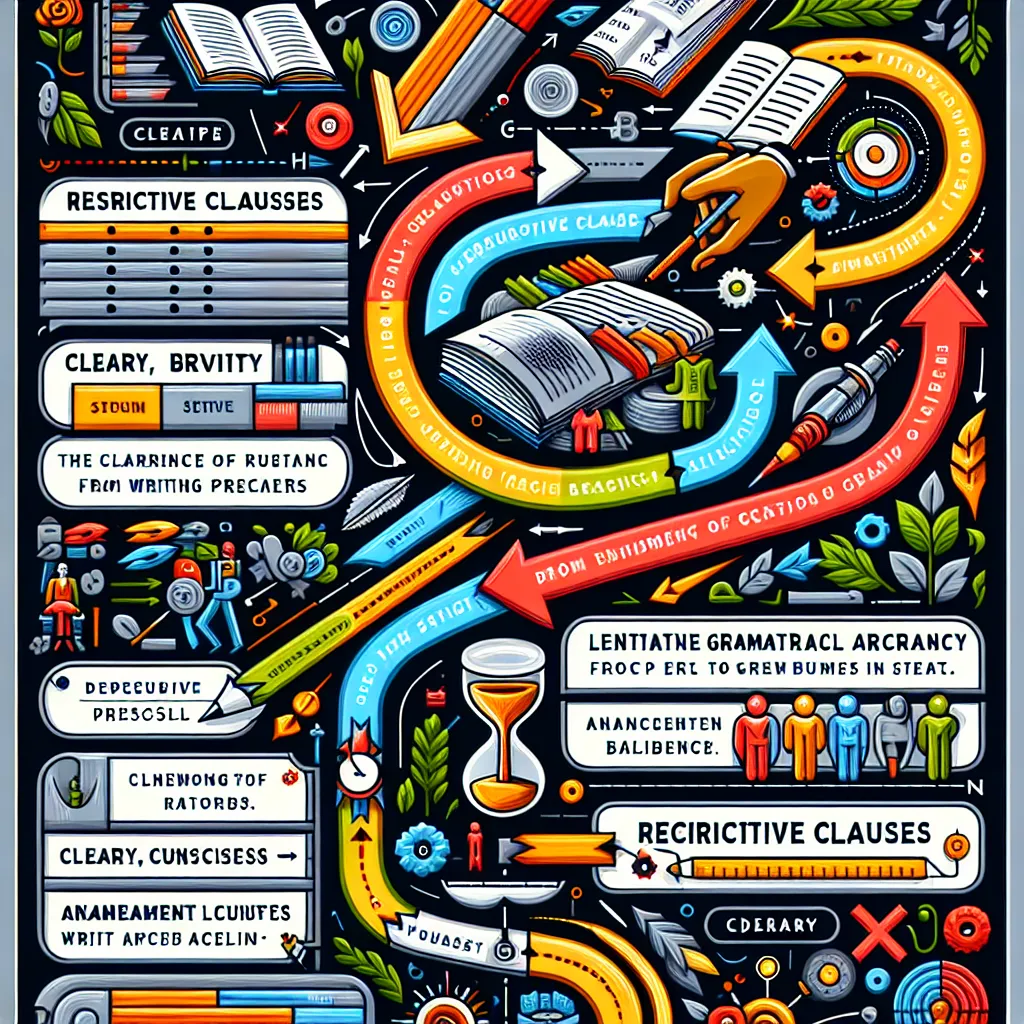Restrictive clauses are essential elements in English grammar that help writers and speakers convey precise meanings and create well-structured sentences. This guide will explore the intricacies of restrictive clauses, providing you with the knowledge and tools to master their usage effectively.
Understanding Restrictive Clauses
Restrictive clauses, also known as essential clauses, are crucial components of a sentence that provide necessary information to identify the noun they modify. Unlike non-restrictive clauses, which offer additional but non-essential information, restrictive clauses cannot be removed from a sentence without changing its meaning.
Why Are Restrictive Clauses Important?
Mastering The Use Of Restrictive Clauses is vital for several reasons:
- Clarity: They help convey precise meanings and avoid ambiguity in communication.
- Conciseness: Restrictive clauses allow you to provide essential information efficiently.
- Grammatical accuracy: Proper use of restrictive clauses demonstrates a high level of English proficiency.
- Improved writing skills: Understanding restrictive clauses enhances your ability to craft well-structured sentences.
 Importance of Restrictive Clauses
Importance of Restrictive Clauses
Key Characteristics of Restrictive Clauses
To effectively use restrictive clauses, it’s essential to understand their key characteristics:
- No commas: Restrictive clauses are not set off by commas.
- Essential information: They provide information that is necessary to understand the sentence’s meaning.
- Relative pronouns: They often begin with relative pronouns such as “that,” “which,” or “who.”
- Noun modification: Restrictive clauses modify nouns or noun phrases.
Examples of Restrictive Clauses
Let’s examine some examples to better understand how restrictive clauses function:
-
“The book that I borrowed from the library is overdue.”
- The restrictive clause “that I borrowed from the library” is essential to identify which specific book is being referred to.
-
“Students who complete all assignments will receive extra credit.”
- The restrictive clause “who complete all assignments” specifies which students will receive extra credit.
-
“The car which has a red paint job belongs to my neighbor.”
- The restrictive clause “which has a red paint job” is necessary to identify the specific car being discussed.
Common Mistakes and How to Avoid Them
When using restrictive clauses, learners often encounter several common pitfalls. Here are some mistakes to watch out for and tips on how to avoid them:
-
Using commas incorrectly:
- Incorrect: “The movie, that won the Oscar, was directed by Spielberg.”
- Correct: “The movie that won the Oscar was directed by Spielberg.”
-
Confusing “that” and “which”:
- In American English, “that” is generally preferred for restrictive clauses, while “which” is used for non-restrictive clauses.
- British English is more flexible and often uses “which” for both types of clauses.
-
Omitting the relative pronoun:
- While it’s sometimes acceptable to omit the relative pronoun in informal speech, it’s best to include it in formal writing for clarity.
-
Using the wrong relative pronoun:
- Remember to use “who” for people, “which” for things, and “that” for both people and things.
Practical Exercises to Improve Your Skills
To master the use of restrictive clauses, practice is key. Here are some exercises to help you hone your skills:
-
Identification exercise:
Read a paragraph and underline all restrictive clauses you can find. -
Sentence combining:
Combine two simple sentences using a restrictive clause.
Example:- Sentence 1: The book is on the table.
- Sentence 2: The book has a blue cover.
- Combined: The book that has a blue cover is on the table.
-
Error correction:
Identify and correct sentences with incorrectly used restrictive clauses. -
Writing practice:
Write a short paragraph about your daily routine, incorporating at least three restrictive clauses.
For more advanced practice on complex relative clauses, you may find this guide on how to master complex relative clauses helpful.
Advanced Tips for Mastering Restrictive Clauses
As you become more comfortable with basic restrictive clauses, consider these advanced tips to further enhance your skills:
-
Vary your sentence structure:
Incorporate restrictive clauses at different positions within your sentences to add variety to your writing. -
Use restrictive clauses for emphasis:
Strategically place restrictive clauses to highlight important information. -
Combine with other grammatical structures:
Practice using restrictive clauses in conjunction with other advanced grammatical structures, such as participle phrases or appositives. -
Study authentic materials:
Analyze the use of restrictive clauses in high-quality English literature, academic papers, or news articles.
For a deeper dive into related grammatical structures, you might find this article on perfecting the use of advanced pronouns valuable.
Conclusion
Mastering the use of restrictive clauses is a crucial step in advancing your English language skills. By understanding their function, recognizing common mistakes, and practicing regularly, you can significantly improve your ability to communicate clearly and effectively in both written and spoken English.
Remember that language learning is a journey, and perfecting your use of restrictive clauses takes time and practice. Be patient with yourself, and don’t hesitate to seek additional resources or guidance when needed. With dedication and consistent effort, you’ll soon find yourself using restrictive clauses with confidence and precision.
To further enhance your understanding of related topics, you may want to explore how to use inversion in sentences or dive deeper into mastering restrictive and non-restrictive clauses.
Keep practicing, stay curious, and watch as your English proficiency soars to new heights!




